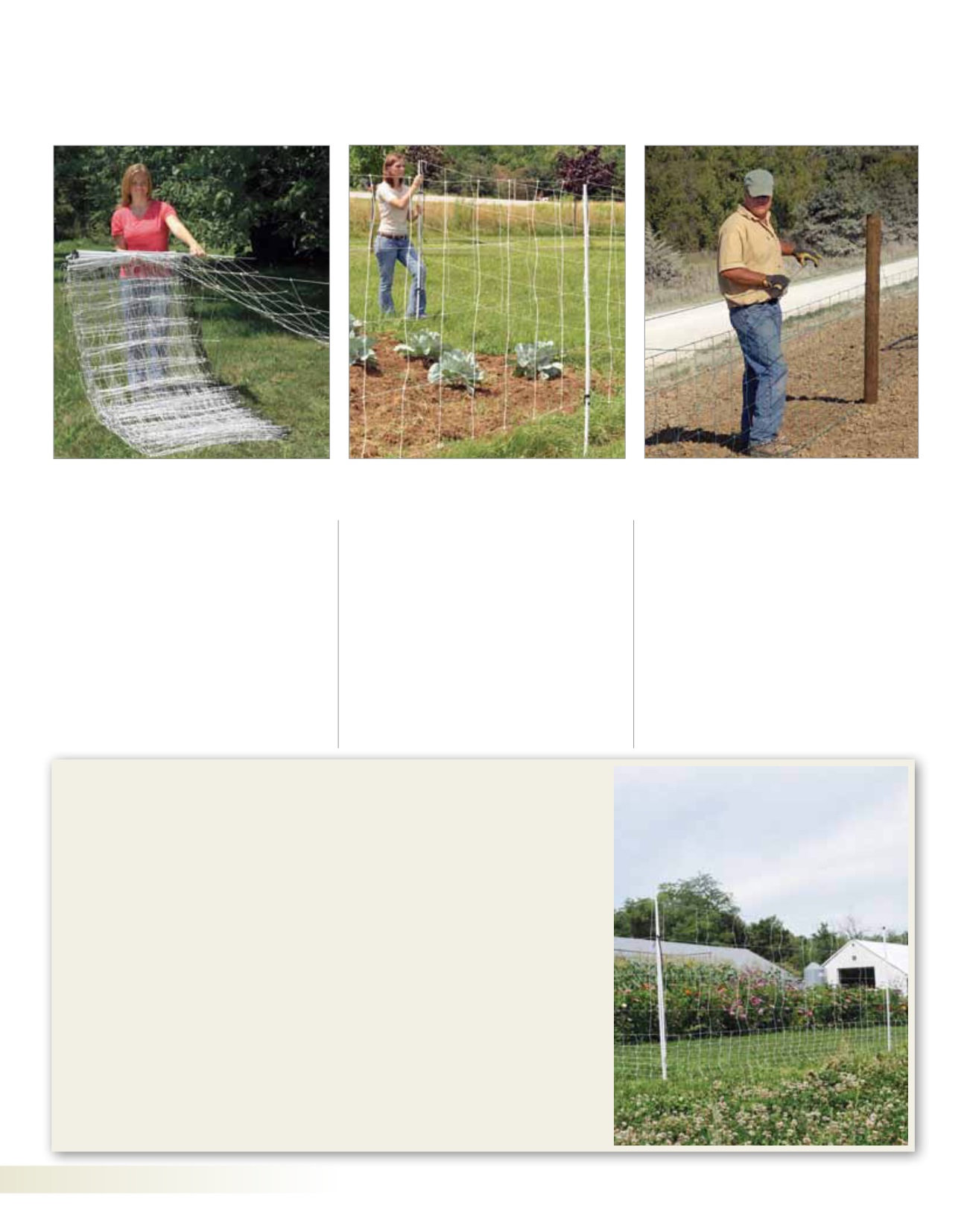
Before you buy or build a fence…
Will the fence be moved? If so, how often?
Never moved
(permanent)
For boundary and subdivision fences
for land that’s owned by the user—and
whose usage is not likely to change!
Requires strong wood, steel or
fiberglass posts that support high-
tensile wires, woven wire, rope or wide
tape—of which one or more strands
are electrified.
More reliable than other options but
more expensive to install. May require
a professional installer.
Moved each season or less
(semi-permanent)
Can be an interim barrier until a
more permanent fence is installed.
This allows folks to field-test fence and
gate locations to see what works best.
Usually consists of electrified net
or multiple electrified strands under
low tension—supported by stronger/
thicker posts than temporary fences.
Will need more maintenance
attention than permanent fences.
Moved daily or weekly
(temporary/portable)
Temporary or portable fences are quick
to install and remove.
To eliminate the need for large end and
corner posts, the fence strands (whether
single, multiple or a mesh/netting) must
be only hand-tensioned. And they must
be electrified properly.
Quick and easy to install. Essential for rotationally
grazing small paddocks.
Semi-permanent fences are usually taller and
require stronger, heavier posts than temporary fences.
Permanent fences use bigger/stronger materials
than other fences and take more time to install.
Don’t assume a fence will do something
for which it was not designed…
There are 3 basic fence designs. Don’t confuse the abilities and limits of each:
1. Fences that stop animals by pain (energized strands).
If you or dogs crowd animals against these fences the animals
will
break
through. The result is damaged fences, escaped animals and animals that
have learned not to fear (and thus avoid) a pain-barrier fence.
2. Fences that stop animals solely by physical strength.
We build these around corrals, handling yards and laneways. They work well
for this but are often too expensive for field situations.
3. Fences that stop animals by a combination of physical strength and pain
(energized strands). We prefer this for most permanent fences.
Energized wires are important:
a. To discourage animals (rams, bulls, stallions and billy goats) during
breeding season.
b. To hold back mothers and progeny desperate for each other during the
days of weaning.
c. To prevent animals from damaging posts and wires via scratching and
rubbing (hair removal or general itches).
06 BEFORE YOU BUY OR BUILD A FENCE
www.premier1supplies.com• 1-800-282-6631









